Get the lowdown on what's happening with baby week by week and month by month—from their first day to their first birthday! Get insights into your child's upcoming milestones and growth spurts, their changing sleep and feeding needs, common health issues and more. To get stage-specific updates, enter baby's birthday below.
Track Baby’s Development
Enter baby's birthday to track their development
Navigate forward to interact with the calendar and select a date. Press the question mark key to get the keyboard shortcuts for changing dates.
Baby Month by Month
Every month, baby gets a bit bigger, stronger and savvier as they learn more about themselves and the world around them. And before you know it, your once-newborn will be walking and talking! Select baby's age to learn what's happening with their growth and development this month.
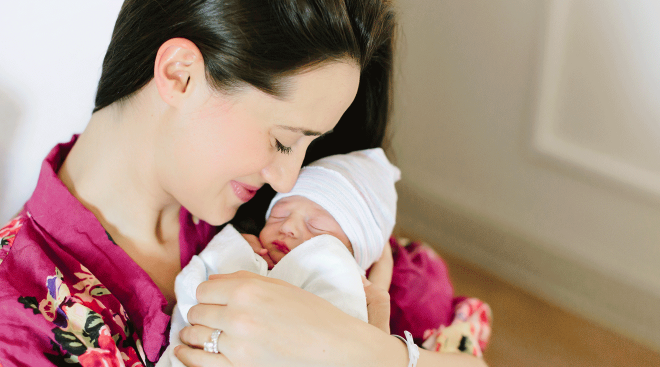
Welcome to parenthood! Life with baby may take some adjusting to, but you'll get the hang of it. These first few weeks with your newborn are about resting, recovering and getting to know your child.

Your world has been turned upside down this past month! Here's what to know as you continue to learn about your 1-month-old and transition into parenthood.

You're probably feeling a bit more confident in caring for baby these days. Of course, baby's needs and abilities are ever-evolving. Here's what's happening with your 2-month-old.
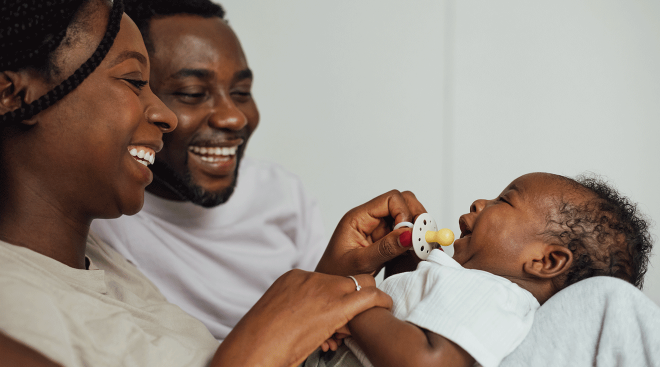
The newborn days are officially behind you! You may be getting plenty of smiles and a little more sleep now. Here's what else you should know about upcoming 3-month baby milestones.

Your 4-month-old is mastering their head control, reaching for toys and may be starting to roll over and even teethe! Find out what else is happening this month.

At this stage, baby is likely obsessed with their hands, grasping their toys and rolling over. You may even be kicking off sleep training this month! Learn what else might be in store.
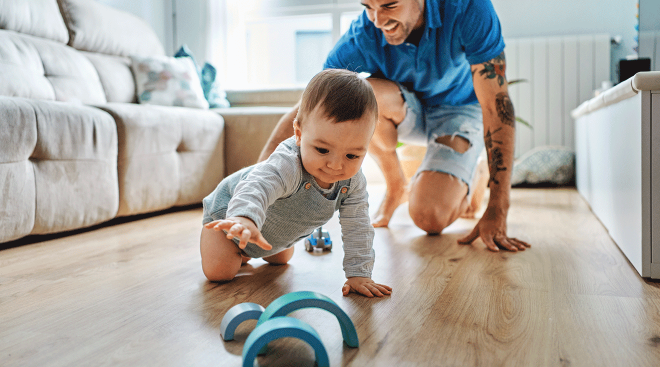
Snacks, anyone? At 6 months old, baby is finally ready to start eating solid foods. They're also beginning to babble, give belly laughs, rake up toys and sit up (with some help). Can you believe you're halfway through the first year?
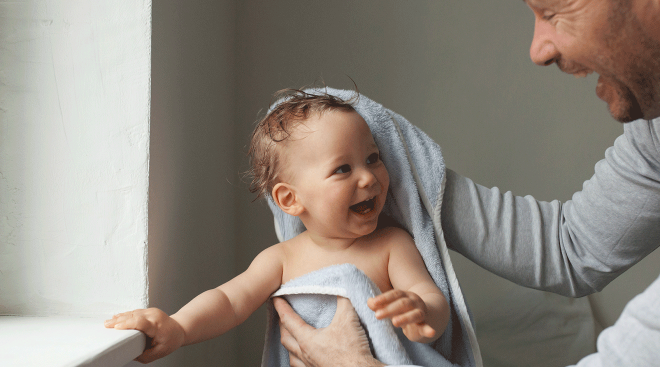
Every child is different, but you may have a crawling baby on your hands soon! It's a good reminder to babyproof your home. Get more tips on how to care for your 7-month-old.

Separation anxiety may kick in this month—but as hard as that can be, it's a sign of healthy development and parent-child bonding. Here's what else you might expect at 8 months.

At 9 months old, baby may be on the move, putting their pincer grasp to good use and combining different sounds and syllables in their babbling. Learn what else baby is up to this month.

This month you might hear baby say "mama" or "dada"! They may also wave, clap and even point at this age. Find out what other skills they're working on now.

At this point, baby is probably crawling and pulling up to stand, and may even be cruising around the room while holding onto furniture! Can you believe baby will turn one year old next month?
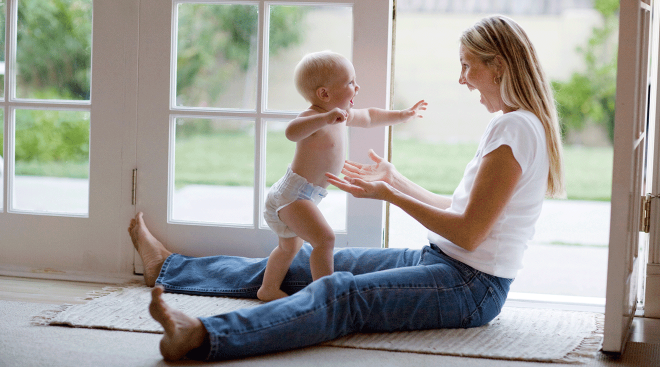
Congratulations! Your little one is now officially entering toddlerhood. It's incredible to think of how much you and your kiddo have learned and grown this first year. Find out what's up next!
Baby Week by Week
Baby is learning and growing at lightning speed, and so much can change from week to week. To keep up with it all—and even stay ahead of the curve—check out our baby week-by-week guides below. You'll get the lowdown on baby's physical growth and cognitive development, sleep and feeding needs, common ailments, parent tips, stage-specific product recommendations and age-appropriate activity ideas, so you can feel confident as you and baby navigate this first year together.
0-Week-Old Baby1-Week-Old Baby2-Week-Old Baby3-Week-Old Baby4-Week-Old Baby5-Week-Old Baby6-Week-Old Baby7-Week-Old Baby8-Week-Old Baby9-Week-Old Baby10-Week-Old Baby11-Week-Old Baby12-Week-Old Baby13-Week-Old Baby14-Week-Old Baby15-Week-Old Baby16-Week-Old Baby17-Week-Old Baby18-Week-Old Baby19-Week-Old Baby20-Week-Old Baby21-Week-Old Baby22-Week-Old Baby23-Week-Old Baby24-Week-Old Baby25-Week-Old Baby26-Week-Old Baby27-Week-Old Baby28-Week-Old Baby29-Week-Old Baby30-Week-Old Baby31-Week-Old Baby32-Week-Old Baby33-Week-Old Baby34-Week-Old Baby35-Week-Old Baby36-Week-Old Baby37-Week-Old Baby38-Week-Old Baby39-Week-Old Baby40-Week-Old Baby41-Week-Old Baby42-Week-Old Baby43-Week-Old Baby44-Week-Old Baby45-Week-Old Baby46-Week-Old Baby47-Week-Old Baby48-Week-Old Baby49-Week-Old Baby50-Week-Old Baby51-Week-Old Baby52-Week-Old Baby
Watch These Videos Next:
































